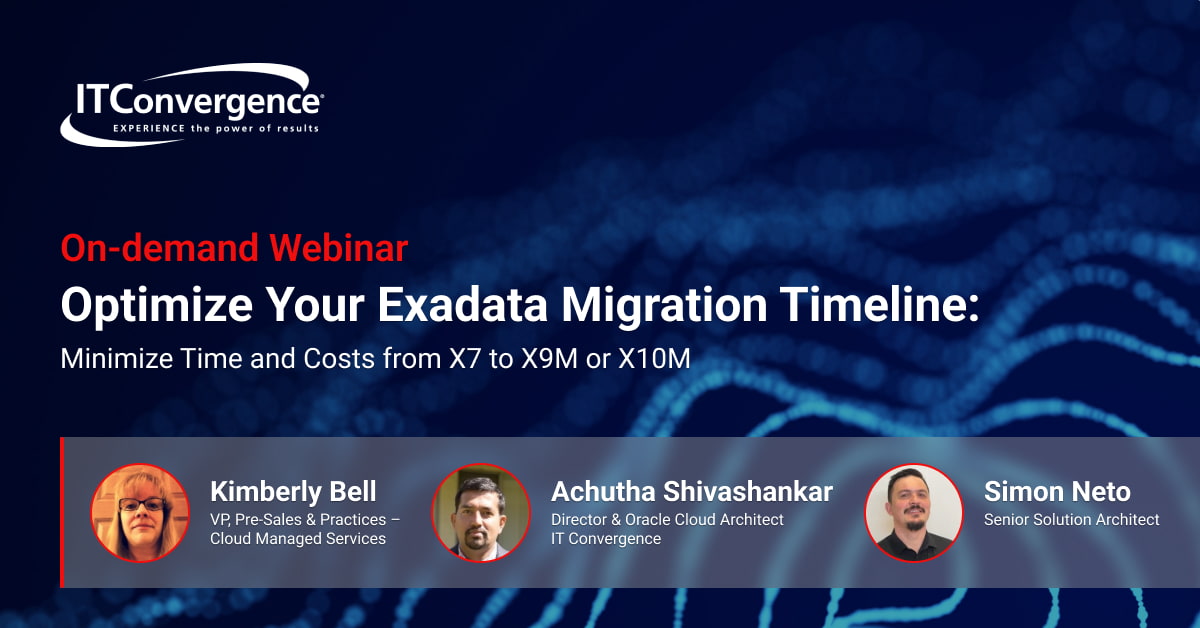The Growing Need for Migration to Cloud Infrastructures
The digital landscape has seen a monumental shift in the past decade, and one of the most significant trends driving this change is the rapid migration towards cloud infrastructures. But why is there such a pressing need for organizations, both large and small, to make this transition? Let’s delve into the reasons behind this transformative shift.
1. Cost-Efficiency:
Traditional IT infrastructures demand considerable investments in hardware, upkeep, and periodic upgrades. Cloud solutions, on the other hand, operate on a pay-as-you-go model, allowing businesses to scale their resources based on demand. This flexibility not only aids in managing costs but also negates the need for hefty upfront investments.
2. Scalability and Flexibility:
One of the major advantages of the cloud is its inherent scalability. Companies can effortlessly scale up or down based on operational requirements. This dynamic nature ensures that resources are not wasted, and businesses can adapt to changing scenarios, be it a sudden spike in web traffic or the launch of a new online service.
3. Enhanced Collaboration:
With workforces becoming more globalized and remote work turning into the norm, especially in the post-pandemic world, the cloud offers tools and platforms that support real-time collaboration. Team members spread across different time zones can simultaneously work on projects, ensuring productivity and continuity.
4. Robust Security:
Contrary to early apprehensions, modern cloud providers invest heavily in security. They offer multi-layered security protocols, including encryption, authentication, and regular security audits. For many businesses, the cloud can often be more secure than on-premises solutions, especially when they lack the resources for constant security updates.
5. Disaster Recovery and Business Continuity:
Natural disasters, power outages, or even human errors can wreak havoc on business operations. Cloud infrastructures offer automated backup and disaster recovery solutions. This ensures that even in the face of unplanned events, data remains safe, and businesses can resume operations with minimal downtime.
6. Competitive Advantage:
In the modern digital era, agility is crucial. Organizations that are quick to adopt, adapt, and evolve have the edge over their competitors. Migrating to the cloud equips businesses with the tools and agility to innovate, respond to market changes, and meet customer demands promptly.
7. Sustainability and Green IT:
With growing concerns over environmental sustainability, cloud data centers offer a greener alternative to traditional IT setups. Optimized for energy efficiency and often powered by renewable energy sources, cloud infrastructures align with the global push towards more sustainable business practices.
Understanding Oracle Cloud Infrastructure and Its Key Benefits
Oracle, a name synonymous with enterprise solutions, has made significant strides in the realm of cloud services. Their platform, Oracle Cloud Infrastructure (OCI), is testament to their commitment to offer robust, enterprise-grade cloud solutions. But what exactly is OCI, and why is it becoming a choice for many businesses? Here, we delve deeper into understanding OCI and its core advantages.
What is Oracle Cloud Infrastructure (OCI)?
At its essence, Oracle Cloud Infrastructure is a comprehensive cloud services platform that offers both IaaS (Infrastructure as a Service) and PaaS (Platform as a Service). Designed with a focus on providing high performance, OCI combines the flexibility and utility of the public cloud with the granular control, security, and predictability of on-premises infrastructure.
Key Benefits of Oracle Cloud Infrastructure
High Performance Computing: OCI is engineered to support applications that demand high compute capabilities and large data volumes. It ensures low latency, high bandwidth, and is ideal for mission-critical applications and database workloads.
Enhanced Security: Oracle prioritizes security. OCI provides a multi-layered security architecture with built-in features like data encryption, network isolation, and identity & access management. This ensures that your data remains protected both in transit and at rest.
Cost Savings: Thanks to its architectural design, OCI offers a competitive pricing model. Users can benefit from lower costs associated with operations, data transfer, and outbound data. Plus, its ‘Pay-as-You-Go’ structure ensures businesses only pay for what they use.
Seamless Migration: For businesses already using Oracle’s suite of products, migrating to OCI is relatively straightforward. Oracle provides a set of tools and services that make the transition smooth, ensuring minimal business disruption.
Global Reach with Localized Support: OCI boasts an expanding global footprint with data centers in various regions. This global reach ensures businesses can serve their customers effectively, no matter where they are. Additionally, Oracle provides robust localized support to cater to specific regional needs and compliance requirements.
Integrated with Oracle’s Suite of Services: OCI is seamlessly integrated with Oracle’s range of applications, databases, and SaaS offerings. This cohesive ecosystem provides businesses with a comprehensive solution that meets varied IT and business requirements.
Sustainable Practices: Oracle is making strides in ensuring their data centers are environmentally friendly. With a focus on energy efficiency and sustainable practices, OCI aligns with businesses’ aspirations to be eco-conscious.
In a world where the cloud is more than just a convenience, it’s a necessity, Oracle Cloud Infrastructure stands tall as a formidable contender. Its blend of performance, security, cost-effectiveness, and integration capabilities makes it an ideal choice for enterprises aiming for agile and scalable cloud solutions. Whether you’re a startup, a growing business, or an established enterprise, OCI’s offerings cater to diverse business needs, ensuring you’re well-equipped for the digital age.
Challenges of Exadata Migration and How to Overcome Them
Oracle’s Exadata is a highly optimized and powerful solution, designed specifically for running Oracle Database at its best. Migrating from one environment to Exadata, however, is not without its challenges. Let’s delve into some of these challenges and provide insights on how to navigate them efficiently.
1. Data Integrity and Consistency
The Importance of Maintaining Data Integrity during Migration: Data is the lifeblood of any organization, and its integrity is paramount. During migration, there’s potential for data loss, corruption, or discrepancies. Ensuring that data remains consistent and intact post-migration is crucial.
Common Pitfalls and How to Avoid Them: Data can get lost if migration processes aren’t thorough. A mismatch in data types, loss of precision in certain values, or errors during transfer can lead to inconsistencies. Avoiding these requires:
- A comprehensive pre-migration data assessment.
- Utilizing high-fidelity migration tools.
- Conducting post-migration audits and verifications.
2. Downtime and Service Interruptions
Potential Business Impacts: Downtime is often the most visible impact of a migration. Extended or unexpected downtimes can lead to business disruptions, financial losses, and a negative customer experience.
Strategies for Minimizing Downtime:
- Opt for phased migration, moving less critical data first.
- Conduct migration during off-peak hours or planned maintenance windows.
- Use Oracle’s real-time data migration features to minimize service interruptions.
3. Cost Implications
Hidden Costs in Migration: Beyond the obvious expenses, there are often hidden costs in migration like additional manpower, extended downtimes, or post-migration adjustments.
Budgeting and Forecasting for Migration:
Proper financial planning is key:
- Conduct a thorough cost-benefit analysis.
- Account for contingencies and unexpected challenges.
- Regularly monitor expenses against the budget during the migration process.
4. Security and Compliance
Ensuring Data Privacy and Meeting Industry Regulations: Data breaches or non-compliance during migration can have severe legal and reputational ramifications. Ensuring data remains secure and compliant with industry regulations throughout the migration is vital.
Oracle’s Built-In Security Features and Best Practices: Oracle offers numerous security features like encrypted data transfer, isolated network configurations, and robust access controls. To maximize these:
- Understand and leverage Oracle’s advanced security capabilities.
- Train the migration team on best security practices.
- Regularly audit and review security protocols during migration.
Benefits of Using OCI for Exadata Migration
Migrating to Oracle Cloud Infrastructure (OCI) for Exadata presents organizations with a plethora of advantages, transforming their operational capacities and driving efficiencies at multiple levels. Here’s an in-depth look at the key benefits businesses can reap by leveraging OCI for their Exadata migration.
Performance Improvements
- Enhanced Scalability and Flexibility with OCI: OCI offers the agility businesses need, allowing them to scale up or down based on their current requirements. This means they can adapt quickly to varying workloads without any performance degradation.
- Real-time Analytics and Faster Transaction Processing: The robust infrastructure of OCI ensures accelerated data processing, paving the way for real-time analytics. This speed translates to faster transaction processing, enabling businesses to serve their customers more efficiently and make data-driven decisions on-the-fly.
Cost Savings
- OCI’s Pay-As-You-Go Model and Potential Long-term Savings: With OCI’s consumption-based pricing model, organizations only pay for the resources they use. This not only optimizes costs in the short run but also ensures potential long-term savings as there’s no need for overprovisioning.
- Reducing Overhead and Administrative Costs: By offloading infrastructure management to OCI, businesses can reduce costs associated with hardware maintenance, facility overheads, and administrative tasks, allowing them to focus resources on core competencies.
Enhanced Security Features
- OCI’s Advanced Security Protocols and Features: OCI is fortified with state-of-the-art security features like data encryption at rest and in transit, identity and access management, and isolated virtual cloud networks. These layers ensure a fortified defense against potential cyber threats.
- Achieving Better Compliance and Data Protection: With global compliance certifications and integrated tools that aid in regulatory adherence, OCI ensures businesses can meet industry-specific regulations with ease. This structured approach not only guarantees data protection but also instills trust among stakeholders and clients.
Streamlined Management and Maintenance
- Automated Updates and Patches with OCI: OCI takes the hassle out of manual updates and patching. With automated routines, businesses can ensure they’re always running the latest, most secure versions without any operational disruptions.
- Simplified Management Interface and Tools: OCI offers a user-friendly interface, equipped with a suite of management tools. This streamlined approach makes it easier for teams to oversee resources, monitor performance, and manage workloads, all from a unified dashboard.
Leveraging OCI for Exadata migration is more than just a strategic move; it’s a transformative decision. The synergies of Exadata’s powerhouse capabilities combined with OCI’s robust and versatile platform offer businesses a competitive edge, driving performance, security, and efficiency to unparalleled heights.




